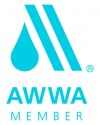The recent (March 2015) edition of Water World contained an intriguing article in the Waste Water Equipment Manufacturer’s Association (WWEMA) Corner entitled The Sales Rep: Part 1: Are We Facing the Extinction of Our Industry’s Most Iconic and Misunderstood Players? (http://www.waterworld.com/articles/print/volume-31/issue-3/inside-every-issue/wwema-corner/the-sale-rep-part-1-are-we-facing-the-extinction-of-our-industry-s-most-iconic-and-misunderstood-players.html) In it, Louis LeBrun gave a brief history of how our industry developed our network of sales representatives to promote and support the sale of equipment.
As a B2B copywriter, I have tried to explain our sales funnel to other B2B copywriters with predictable results. Their eyes glaze over. Our sales funnel is incredibly complicated and long. While many B2B decisions have a long sales cycle, often 6 months to a year, ours can be literally years in the completion. From the consulting side, I know that I have often contacted a sales rep and begun evaluating processes and preparing Engineering Reports a year or more before the project even gets approved (by the regulators) to go out to bid – before a sale is even possible. In this long process, between the equipment manufacturer and the client, there is a long line of folk who can either support or derail your sale. All of these, and yes, I would include the equipment rep, are at one time or another your target market – and marketing materials have to address all their needs.
Sales Rep – what makes them recommend YOUR solution?
I remember as a young consultant, being amazed that a rep might have a number of competing lines of the same equipment that might serve my purpose. They may represent several lines of pumps for instance, or aeration equipment, or even entire activated sludge processes. They may have multiple filter lines, a myriad of disinfection options – in short, the choices are enough to make a young, green, consulting engineer’s head spin. How did the rep choose which equipment to suggest?
Then there is the time and effort involved. A sales rep is the consultant’s line to the information they need to make an informed decision. Design parameters, energy usage, constructability, operability, maintenance and the elephant in the room - cost, both capital and operational. The rep puts a lot of effort into helping the engineer make the case for a process to the rest of the “sales funnel”, the end client to be sure, but also the operator, contractor, and regulatory agency. Any of these other stake holders can torpedo the sale.
Sometimes I would call a rep asking about a particular process, one I may have seen marketing materials for, only to have them tell me they did not rep that line, BUT here was a competitor’s similar process and it was better because…….and sometimes, just like that, the original process manufacturer lost a potential sale. Why? Because I trusted the sales rep. We had a relationship.
So how does the sales rep choose?
To be honest, I don’t know the answer to this question. But I know that as equipment manufacturers, you need to – and be addressing it. While the article in Water World mentioned that there are those who suggest that the sales rep structure is antiquated and should be replaced, it concluded that “selling in our industry fundamentally remains a person-to-person effort.” What has changed is the amount and accessibility of information. Engineers and clients can now bring up more questions and cite more information about your competitors, and if your sales rep does not have good answers and counter arguments, again your sale is in jeopardy.
How do you support your reps?
They are your front line, your foot in the door. How do you support your reps, keep them informed of your innovations and excited about your product? How do you equip them with answers and compelling data when engineers and clients come with a study from your competitor? Addressing these questions will go a long way toward driving sales.



Leave a Comment